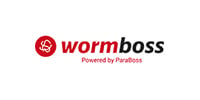Week 47 - May 2024
Eastern Market Indicator (EMI)
Eastern Market Indicator (EMI)
Microns
AWEX Auction Micron Price Guides
Sales held Tue 21st May & Wed 22nd May 2024
Offering (Aust. Only)
Offering (Aust. Only)
Sales Week 47: 22nd May 2024
Currency Movements
Currency Movements
Sales Week 47: 22nd May 2024
Forecast
Forecast
Scheduled Australian Wool Auction Sales
AWI Commentary
Not much change to the overall price level at this week’s Australian wool auctions. All types remain under reasonably steady demand, with just the broader than 20micron Merino types adjusting downwards by any significant margin. The 0.4% stronger Australian dollar (AUD) value against the US dollar (USD) was offset by the 0.4% lower AUD auction indicators making for a rather mundane sales series. This week saw just a 1-day sale in Fremantle as national volumes start to dwindle prior to the end of the financial year.
The big three Chinese top maker representatives dominated the Merino market his week. These influential buyers took advantage of the generally subdued trader activity, particular from the largest buying exporter. These direct buying orders and indent operations are becoming more of a normal feature of the auction scene lately, and not just restricted to China.
This method of operation obviously takes away opportunities from traders as volumes available to forward contract are restricted under sluggish demand scenarios and direct buying at auction by the major overseas players. Most big traders now have an indent client or two to keep purchasing ticking over and to cover off some overheads.
Buying what you can sell/ship at a fixed price for prompt shipment or close delivery at all parts of the pipeline is key. This low-risk investment almost guarantees a rather unspectacular return but lessens the chance of the original capital spent converting into a loss. Opportunities do diminish though for returns on investment worthy of the speciality of export services provided.
This style of operation is not restricted to the greasy wool buying. A major portion of the supply chain, right from the first stage manufacturing all the way through to garment making and retail, are staying true to risk aversion strategies. The pervading uncertain global economy, significant areas of conflict and the muted consumers appetite for discretionary spending on luxury clothing are the leading factors.
The lower risk investment by not stocking raw wool, top, yarn or garments heavily, or contracting too far into the future generally brings more stability to business as seen by the relative narrow trading bands of the 23/24 season.
Next week has around 33,000 bales rostered to sell Tues/Wed.












